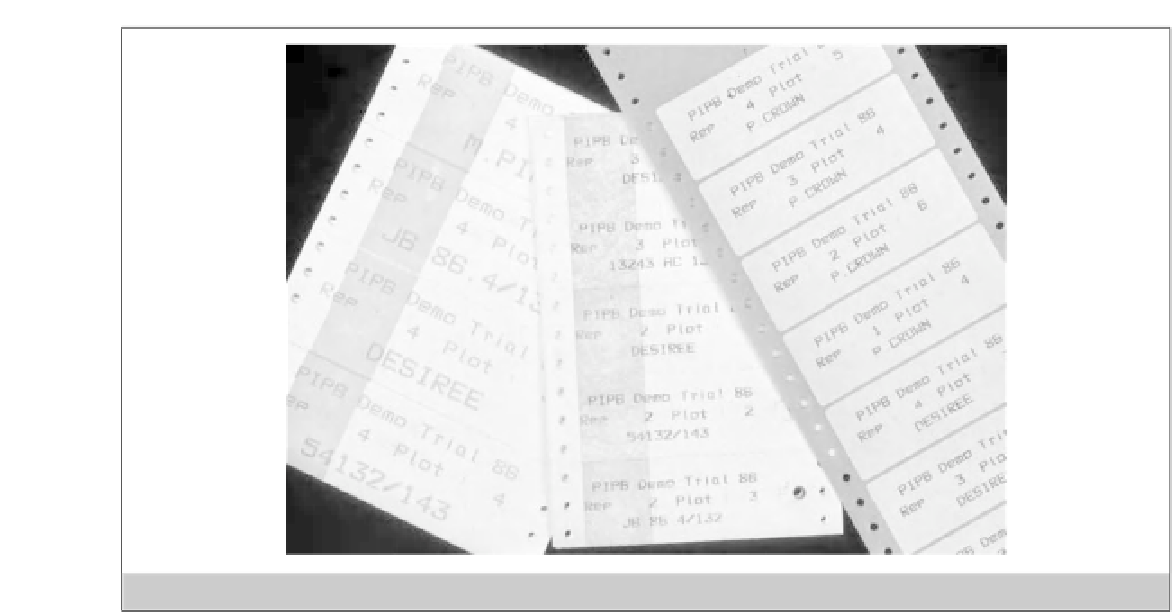Agriculture Reference
In-Depth Information
Figure 9.8
Assortment of planting and harvest labels used to organize breeding material.
•
Once the 'best' genotypes have been identified
the operation will begin at stage one again the
following year.
The following section will examine a number of the
options or routines that are available and explain how
they may be used to increase the efficiency of a plant
breeding programme.
This cyclic operation will continue over a number of
years. Starting in the early stages where perhaps many
thousands of lines will be tested at limited sites and with
few characters recorded. Moving to an intermediate and
advanced stage until after several selection rounds only
one or two potential new cultivars have survived for
varietal introduction.
Computers can be of great benefit to plant breeding
in carrying out all of the tasks above, and perhaps even
in others not mentioned. Often it is necessary to use
different software packages for different aspects of the
programme although there are a few packages that have
been specifically designed for managing plant breeding
programmes or for field experimentation studies.
Computer software packages that are available are
all roughly of the same form. There is a central data
storage (database) that can be accessed by a number of
routines. Each routine will perform specific operations.
Various routines may add information to the database
while others will take information from the database
and carry out a specific task.
Data storage and retrieval
All plant breeding schemes will generate vast bodies of
data. If these data are to be used effectively for selection
of the most desirable genotypes then reliable storage and
retrieval of information is essential. Computers offer the
option of storing data in such a manner that data sets
can be tabulated for inspection in a number of different
ways using
database management systems
.
In simple terms there are two types of databases used
in plant breeding called
breeding line databases
and
germplasm databases
. There are a number of differ-
ences between the database structure depending on the
two types.
Plant breeding databases will store information on
assessment trials. Therefore, a large proportion of the
entries in these databases will be discarded after each
selection stage. Early generations will have thousands
of
records
(where one record is associated with infor-
mation from a single genotype) with only a few data
scores on each. Conversely, a genotype, which survives







